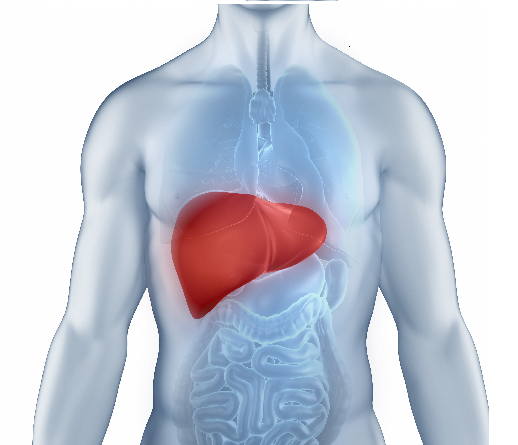Hypertension: Causes, Symptoms and Diagnosis
What is hypertension?
A blood pressure that is consistently higher than normal (120/80 mm Hg) is called hypertension or high blood pressure. High blood pressure usually has no symptoms, but it is a major risk factor for cardiovascular disease (CVD).

If not treated timely, high blood pressure can cause:
- Transient ischemic attack (TIA)
- Stroke
- Heart Attack
- Enlarged heart
- Heart failure
- Peripheral artery disease
- Aneurysms
- Kidney disease
- Broken blood vessels in the eyes
What is blood pressure?
Blood pressure is a measurement of the force that blood uses to get through the arteries. Each time your heart beats, blood is pumped into your body’s arteries, which carry it to your cells and tissues. It occurs 60 to 100 times every minute, 24 hours a day.
Symptoms of hypertension
Generally, you might not experience any symptoms if you have high blood pressure. However, you may have the following symptoms if you have high blood pressure:
- Headaches
- Nose bleeds
- Shortness of breath
- Blurred vision
- Fatigue
- Chest pain
- Palpitations
Risk factors for hypertension
Your risk of having high blood pressure is higher if you:
- Have a family history of high blood pressure, cardiovascular disease (CVD) or diabetes
- Are age 60 or older
- Have high cholesterol
- Use oral contraceptives
- Have obesity
- Use tobacco products
- Don’t exercise
- Eat a high-salt diet
How Should Blood Pressure Be Measured Correctly?
The correct method for taking your blood pressure is:
- Do not drink or have any food 30 minutes before you measure blood pressure
- Empty your bladder before taking a reading.
- Talking while having your blood pressure taken is not advised.
- Rest your arm at chest height
- Make sure your back has a support
- Sit with feet flat on the floor and uncrossed.
- Cuff against bare skin
Measuring your blood pressure at home is called “self-measured blood pressure” (SMBP). Follow the below tips if you are measuring blood pressure at home:
- Take your blood pressure at the same time every day.
- Take at least 2 readings, 1 or 2 minutes apart.
Diagnosis of Hypertension
High blood pressure is diagnosed if the blood pressure reading is equal to or greater than 130/80 mmHg. A few times, the bottom blood pressure reading is normal, but the top number is high. This is called isolated systolic hypertension, which is very common in people older than 65.
Tests
If you are diagnosed with high blood pressure, the doctor may recommend the following tests to check for a cause.
Ambulatory monitoring: A blood pressure monitoring test is done for a longer period to check blood pressure at regular times over six or 24 hours.
Lab tests: The following tests are conducted to determine the cause of high blood pressure:
- Blood and urine tests
- Cholesterol and blood sugar test
- Kidney, liver and Thyroid function test
Understanding your blood pressure reading
Blood pressure is measured with the help of an instrument called a sphygmomanometer. It is measured in millimetres of mercury (mmHg) and is given in two figures:
- Systolic Pressure: When your heart forces blood out.
- Diastolic Pressure: When your heart rests between beats.
If your blood pressure is 120 over 80, it implies that your systolic pressure is 120 mmHg and your diastolic pressure is 80 mmHg.
When should you get your blood pressure checked?
People with high blood pressure do not show any symptoms, so it is important that you get your blood pressure checked regularly. It is recommended that adults over the age of 40 have their blood pressure checked every five years. Those who are at increased risk of high blood pressure should get their blood pressure checked once a year.
Complications of uncontrolled hypertension
Hypertension can cause serious damage to the heart. Excessive pressure can harden arteries, decreasing the flow of blood and oxygen to the heart. The increased blood pressure and reduced blood flow can cause:
- Chest pain, called angina.
- Heart attack
- Heart failure
- Irregular heartbeat
Hypertension can also burst or block arteries that supply blood and oxygen to the brain, which can lead to stroke.
How to Manage Hypertension?
Hypertension can be managed by making a few lifestyle changes, as follows:
- Having a healthy, balanced diet
- Reduce your salt intake
- Manage a healthy weight
- Increase your physical activity
- Manage stress
- Avoid smoking
- Limit alcohol
- Monitor your blood pressure regularly
What should you avoid if you have hypertension?
Avoid the following things if you have hypertension:
- Too much salty food (have less than 2 grams per day)
- Food high in saturated or trans fats
- Smoke or use tobacco
- Too much alcohol
*The content is for informational purposes only and should not be taken as professional medical advice.
Disclaimer:
This blog is for informational purposes only and should not be construed as advice or as a substitute for consulting a physician. It is not a substitute for medical advice or treatment from a healthcare professional.












